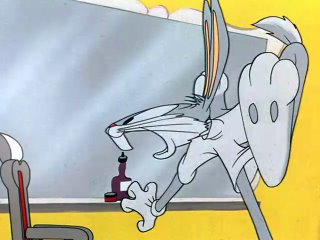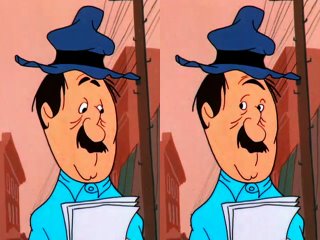
Exaggeration is a very important principle in animation - after all, we're trying to caricature and distill life to it's clearest essence, not reproduce it verbatim. But many students often misunderstand the meaning of exaggeration; they think it always means "bigger" or "faster" or "broader". Not so! It can also mean "smaller", "slower" or "subtler". The key is the "-er": figure out the adjectives that describe the attitudes and actions in your shot, then try to make them "more" like that by adding "er" to the end of the adjectives.
If every pose and action in a performance is extreme then none of them are - the texture becomes even and the audience gets bored. It's important to have big moves AND small moves, fast ones AND slow ones. By varying these elements you give variety to your scene and place emphasis where it needs to be. If you've got three big changes and one small change, the small one will stand out.
The late Chuck Jones was a master of exaggeration. He could achieve more impact with a single eyebrow raise than a lot of animators could with a full-body take. Just look at his work on How The Grinch Stole Christmas and his later Warner Brothers shorts. He knew that less could be much more. He could exaggerate the stillness of a character's pose, so that a change would be isolated to a single small part of the character; perhaps a single muscle. He made a trademark of having a character hold a pose and just glance at the camera with his eyes, as if to say, "what the...?"

So the next time your planning and animating a character, think of ways to make it "er"!

No comments:
Post a Comment